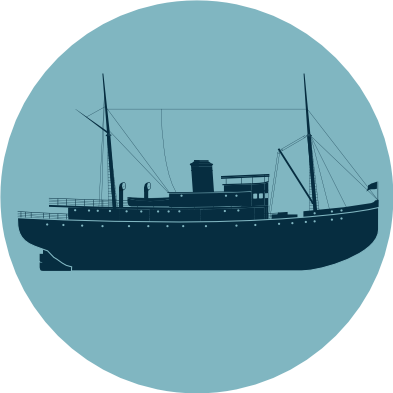
 0
0Transcription: "Association des marins de L’Islet (association of sailors of L'Islet)"
This page includes the written transcript of this podcast, translated into English.
I invite you to continue our incursion into the maritime life of L'Islet.
Everywhere in the New World, large forests facilitate shipbuilding. This is the case here, on the south shore, where good wood exists in abundance. Moreover, this raw material is located near the St. Lawrence waterway. What a stroke of luck! Hundreds of large sailing ships were built on these shores during the 19th century. During this period, wharves were also constructed in each parish to accommodate the large sailing ships as well as the boats used for coastal shipping.
The naval trades, both on land and on water, intensified the maritime life of L'Islet. So a number of L'Islet residents rose in rank and became captains. Among them, Jean-Baptiste Bernier, the grandfather of our famous Joseph-Elzéar, was a long-distance captain. But the Bernier family is not the only one to develop a maritime tradition through the generations. It is also the case of the Caron, Chouinard, Gamache, Pelletier, St-Pierre families, and many others besides... 70 families in fact! Click on the button below to discover them.
In 1880, the first maritime academy in the country was founded at Collège de L'Islet. Barely 50 years later, our parish provided more than 350 sailors to the merchant navy! Incredible, isn't it?
In the village of L'Islet, there’s a pretty processional chapel dedicated to Saint Joseph: the Chapelle des Marins.
You can see it after your visit to the museum, a mere stone’s throw from here on Chemin des Pionniers. A replica of this small building is located in the museum's model storage area. The chapel was built in 1835. A small group of sailors founded, around 1920, the Association des marins de L'Islet (association of sailors of L'Islet) in order to restore and maintain it. A few years later, on the occasion of its centenary, the association dedicated the chapel to the protection of sailors. Today, the names of sailors from L'Islet who died at sea are still inscribed on panels inside the chapel.
In 1965, the association grew and became the Association des marins de la Côte-du-Sud (association of south shore sailors). Then, in 1968, the association realized its dream of giving Quebec a maritime museum!
